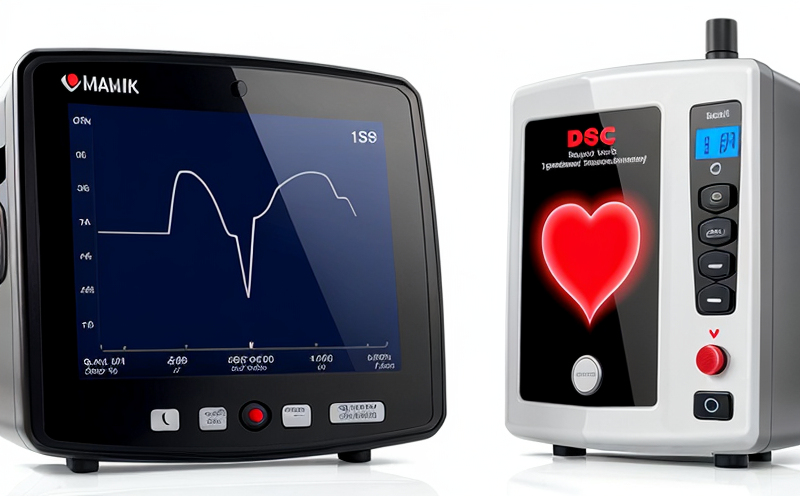ISO 14708-2 Pacemaker Lead Flexural Fatigue Testing
The ISO 14708 series of standards is dedicated to the testing and assessment of cardiac and cardiovascular devices, focusing on their mechanical durability. Among these, ISO 14708-2 specifically addresses flexural fatigue testing for pacemaker leads. This service ensures that medical device manufacturers can reliably demonstrate compliance with international safety and performance criteria.
The primary goal of this test is to determine the fatigue life of a pacemaker lead under conditions simulating real-world use. Fatigue failure in these devices could potentially result in malfunction, which might have serious health implications for patients. By conducting rigorous flexural fatigue testing according to ISO 14708-2, manufacturers can ensure that their leads are robust enough to withstand the stresses encountered during implantation and operation.
Flexural fatigue tests involve subjecting a specimen (the pacemaker lead) to repeated bending cycles until failure occurs. This process simulates the cyclic loading conditions experienced by the lead as it connects with the heart tissue over time. The test setup typically includes a testing machine capable of applying precise, controlled loads and measuring displacement at regular intervals.
Preparation of the specimen is crucial for accurate results. Before testing, the pacemaker lead must be cleaned thoroughly to remove any surface contaminants that could affect the outcome of the test. Care should also be taken to ensure that the sample represents the design intended for clinical use as closely as possible. The lead’s geometry, including its electrodes and connections, plays a key role in determining how it will respond under bending stress.
The testing protocol outlined in ISO 14708-2 specifies detailed procedures for preparing the specimen, selecting appropriate test parameters such as frequency of loading cycles, range of applied forces, and measurement techniques. Compliance with these guidelines ensures that all participants in the regulatory approval process are evaluating the same conditions, thereby promoting consistency across different laboratories.
During testing, continuous monitoring allows operators to detect early signs of fatigue-induced damage. Advanced instrumentation captures data on displacement, strain, and force applied throughout each cycle, providing valuable insights into the lead's behavior under stress. Once sufficient cycles have been completed or failure has occurred, analysis focuses on identifying any patterns in how failures developed, which helps refine future designs.
The results of flexural fatigue testing are critical for regulatory approval processes. They provide evidence that a pacemaker lead can endure the expected conditions without compromising patient safety. Regulatory bodies like the FDA and EU MDR require such data to verify compliance with relevant standards. Positive test outcomes also enhance confidence among healthcare providers who trust these devices to function reliably over extended periods.
Implementing ISO 14708-2 flexural fatigue testing not only meets regulatory requirements but also contributes significantly to improving patient care by ensuring safer medical devices. This service supports continuous improvement in cardiac and cardiovascular technology, contributing to better health outcomes for patients worldwide.
Applied Standards
The ISO 14708-2 standard is part of a broader suite of standards designed specifically for the evaluation of pacemaker leads and similar cardiac devices. These include:
- ISO 14708-1: General requirements
- ISO 14708-3: Pullout testing
- ISO 14708-4: Shear testing
Compliance with ISO 14708-2 ensures that the flexural fatigue performance of pacemaker leads meets rigorous international standards, enhancing trust in the safety and efficacy of these devices.
Industry Applications
The application of ISO 14708-2 testing is essential for several key areas within the medical device industry:
- R&D & Development: Ensures new pacemaker lead designs are robust and reliable.
- Manufacturing: Verifies that production processes maintain high-quality standards.
- Quality Assurance: Provides a consistent method for assessing product performance.
- Regulatory Compliance: Meets stringent regulatory requirements for market entry.
Environmental and Sustainability Contributions
The rigorous testing procedures mandated by ISO standards like 14708-2 contribute positively to both environmental sustainability and patient safety:
Safety: Ensuring pacemaker leads perform reliably reduces the risk of device failures, which could lead to adverse health events for patients.
Efficiency: Reliable devices minimize the need for repeated surgeries or replacements, thus improving overall patient care efficiency.
Ethical Responsibility: By adhering to stringent testing protocols, manufacturers demonstrate their commitment to delivering high-quality products that contribute positively to public health.





